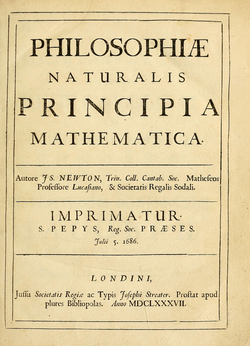Here is the Greek model of the solar system (also the geocentric model of the universe). As they believed the fact that Earth has its stationary rotation (true), and every other planets (not known as planets then, but only objects in the sky) have a self circulation and some have rotation around the earth in orbits. Notice some anomalies exist in this diagram: Why does the Sun have no self circulation on its orbit? Why does Venus and Mercury have no orbit and do not rotate around Earth?
This view of the universe has not changed until recently near 1500 A.D. When Nicolaus Copernicus suggested that celestial objects actually orbited the Sun (the heliocentric model of universe). However, unfortunately for him, his correct hypothesis was prohibited by the Pope and his great mind was decapitated. This new thought only started to surface a century after death of Copernicus. Finally as Galileo invented the telescope and observed satellites orbiting Jupiter, it showed that not every celestial object is orbiting around earth. Also it is also suggested that planetary motion is actually not circular and eclipse, which made this theory more align with observations. Hello centric theory proved that the universe is not fixed in one place, everything is unique and has different properties.
The heliocentric model
The retrograde motion of other planets and starts in the heliocentric system. (How we observe the other planets in our solar system).
For example, as Jupiter moves, Earth moves faster than Jupiter, thus we observe as Jupiter is moving fast. We also observe fixed starts (such as our Sun) as moving because we are moving.
The book now moves on taking about Newton. Newton (and Galileo possibly), in my opinion, is the first real physicist in history. He developed theories, calculations to explain observations. Newton proposed the law of universal gravitation in his Naturalis Pricilla Mathematica. In this book, Newton explained gravity as a force of attraction between every bodies (with mass) of the universe. This force is directly proportional related to their distance and mass. Gravity between Earth and objects makes them fall down. The book also contains complex mathematical explanation of motion of planets. Newton's law showed that gravity cause moon to orbit earth in elliptical motion and etc.
But, just like every other type of theories, it triggers some other questions. The most important one being that why do stars not collapse into each other into a single point? Newton attempts to explain this by proposing an infinite universe. In an infinite universe, there is not a definite point for stars to fall into However this would not work as the opposite argument can be made as gravity is always attractive and you can pick any point in the infinite universe and the stars on both side is equal, therefore they should still collapse in. What is the actual answer to this question of infinite static universe? What is the missing link to our understanding of universe?
Tune in tomorrow for more!

No comments:
Post a Comment